Your cart is currently empty!
Published on
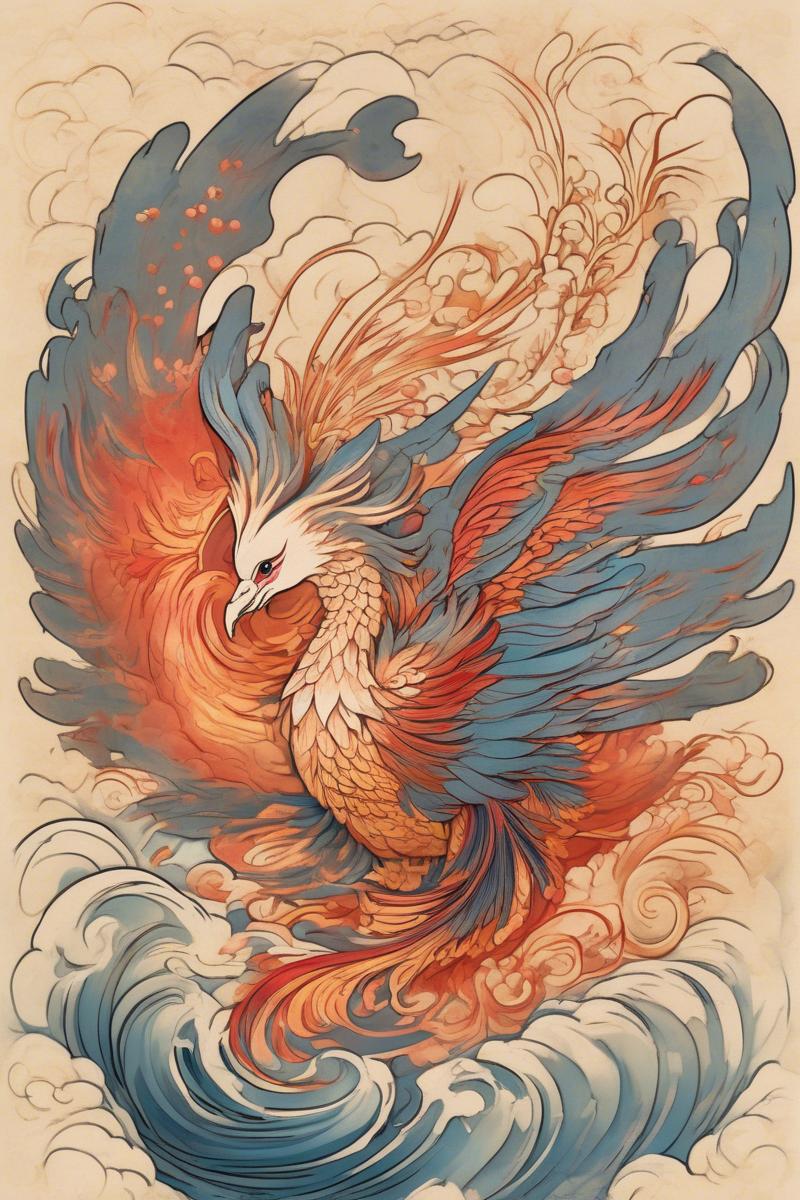
The Ancient Origin of Chinese Mythical Phoenix Tattoos
Long before the Egyptian phoenix rose from ashes, bird worship flourished in Neolithic China. At the Xinle site in Shenyang, archaeologists unearthed a 7200-year-old wooden sculpture shaped like a flying bird. It was displayed jointly by the Shenyang Museum and Xinle Heritage Site.

This wooden sculpture measures 38.5 cm in length and 4.5 cm in width. Carved symmetrically on both sides, it comprises the beak, head, body, tail, and a handle. It is affectionately known as the ‘Sun Bird.’
— China Shenyang Museum
This artifact may not be a phoenix, but it shows that bird totems existed in China thousands of years before the Egyptian Bennu bird was recorded. We can reasonably infer that China’s phoenix concept (凤凰, fenghuang) emerged from early bird worship. Over time, mythology and ritual abstracted and refined it into a layered cultural symbol.
Phoenix Across the Dynasties: Symbolism and Power
Qin–Han Dynasties (221 BCE – 220 CE): Royal Authority
- Symbolism: The phoenix represented imperial mandate and peace. Often engraved on bronze vessels and royal garments.
- Image Reference: Phoenix bird patterns on Han ceremonial bronzes.
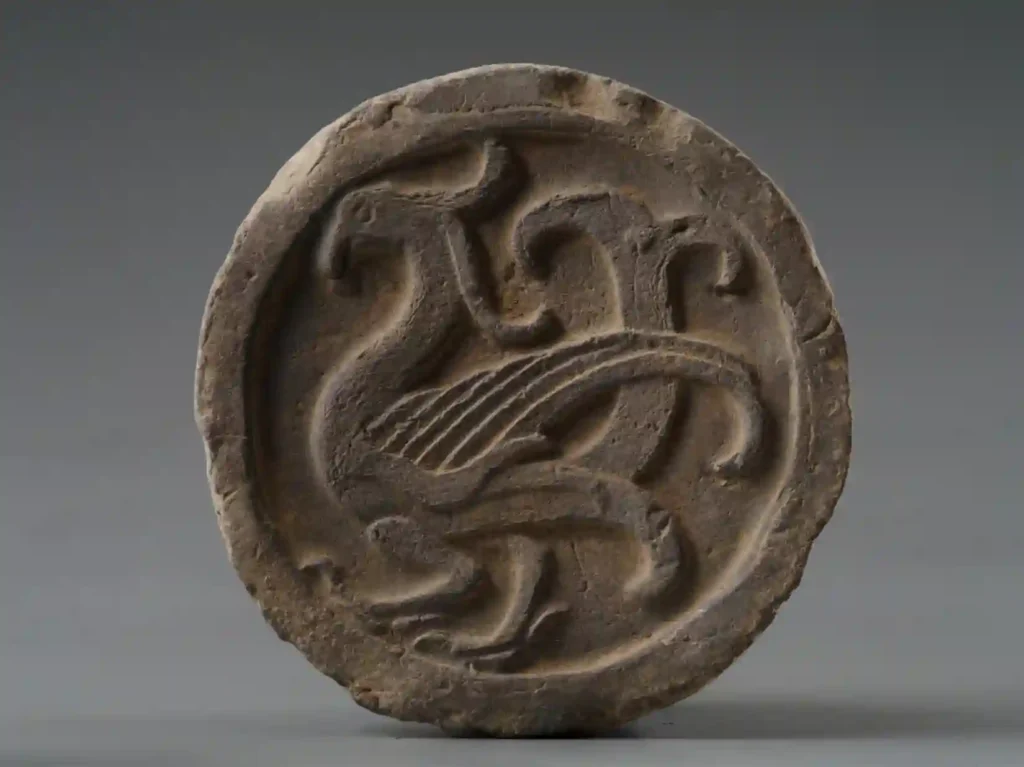
And Phoenix Design夔凤纹
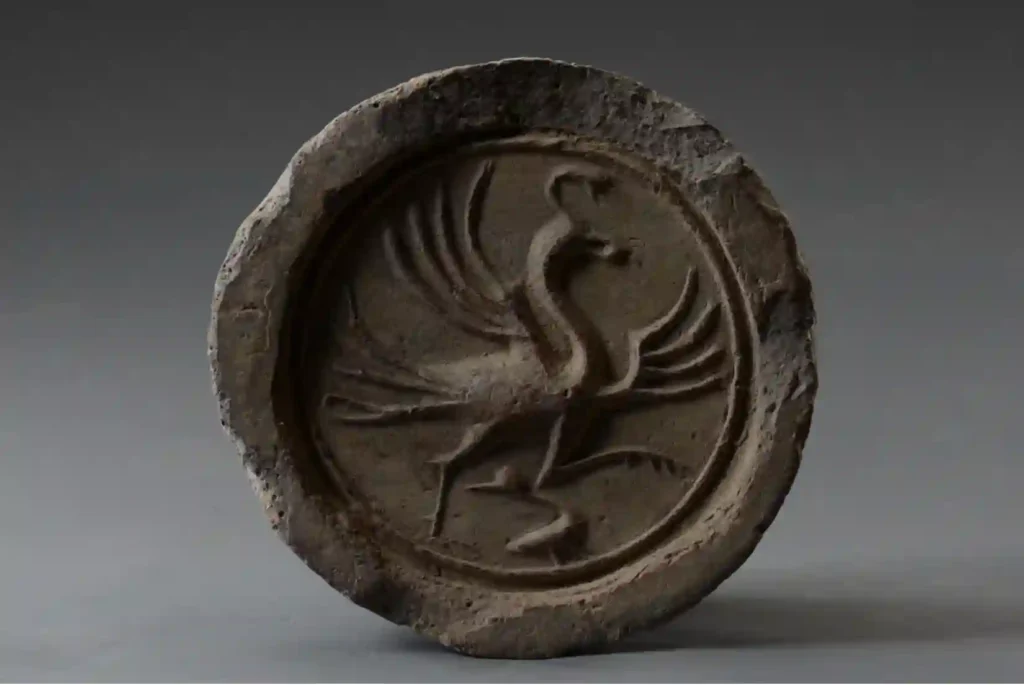
Phoenix Bird Design凤鸟纹
Tang Dynasty (618–907): Harmony and Prosperity
- Symbolism: A flourishing time when phoenix imagery symbolized peace, moral virtue, and cosmic balance. Seen in murals and temple sculptures.
- Image Reference: Tang stone phoenix carvings.
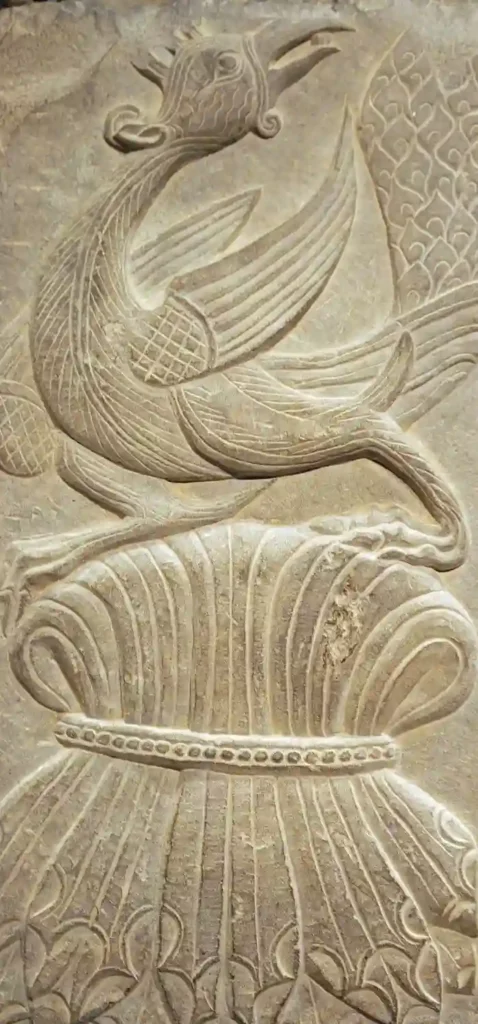
Song Dynasty (960–1279): Literary Elegance
- Symbolism: Scholars embraced the phoenix as a refined symbol of integrity and aesthetic excellence. Often paired with peonies.
- Image Reference: Phoenix and peony carvings on Song stone platforms.
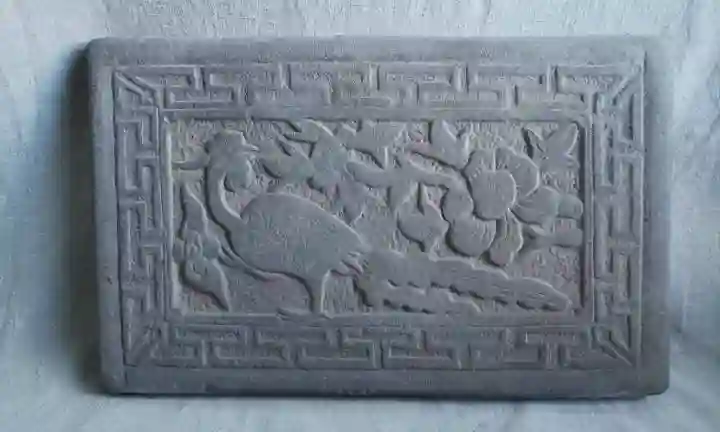
Ming Dynasty (1368–1644): Feminine Nobility
- Symbolism: Confucian ideals linked the phoenix with female virtue, chastity, and status. Common in wedding attire and golden hairpins.
- Image Reference: Ming dynasty gold phoenix ornaments.

Each era gave new meaning to the phoenix, shaping today’s interpretations of mythical phoenix tattoos—from royal power to graceful beauty.
Phoenix and Its Divine Avian Counterparts
In Chinese mythology, the phoenix never stood alone. Several divine birds carried parts of its symbolic burden. This polytheistic division of symbolic duties enriched the phoenix’s legacy.
| Divine Bird | Traits | Symbolic Role | Relation to Phoenix | Source |
|---|---|---|---|---|
| 鸾鸟 (Luan) | Rainbow plumage, sweet voice | Harmony and marital bliss | Often paired with phoenix as “鸾凤和鸣” (phoenix and luan singing) | Classic of Mountains and Seas |
| 青鸟 (Qingniao) | Blue-feathered messenger | Emissary of Queen Mother of the West | Sacred but functional, not royal | Same |
| 朱雀 (Zhuque) | Red fire bird, southern celestial symbol | Controls fire, summer, and south | Often confused with phoenix, but rules celestial direction | Same |
| 玄鸟 (Xuanniao) | Black swallow | Ancestor of Shang people | Symbol of divine birth, not rulership | Same |
| 重明鸟 (Chongming) | Twin pupils, sees all | Judge of justice, banishes evil | Distinct in function, enhances bird myth ecology | Same |
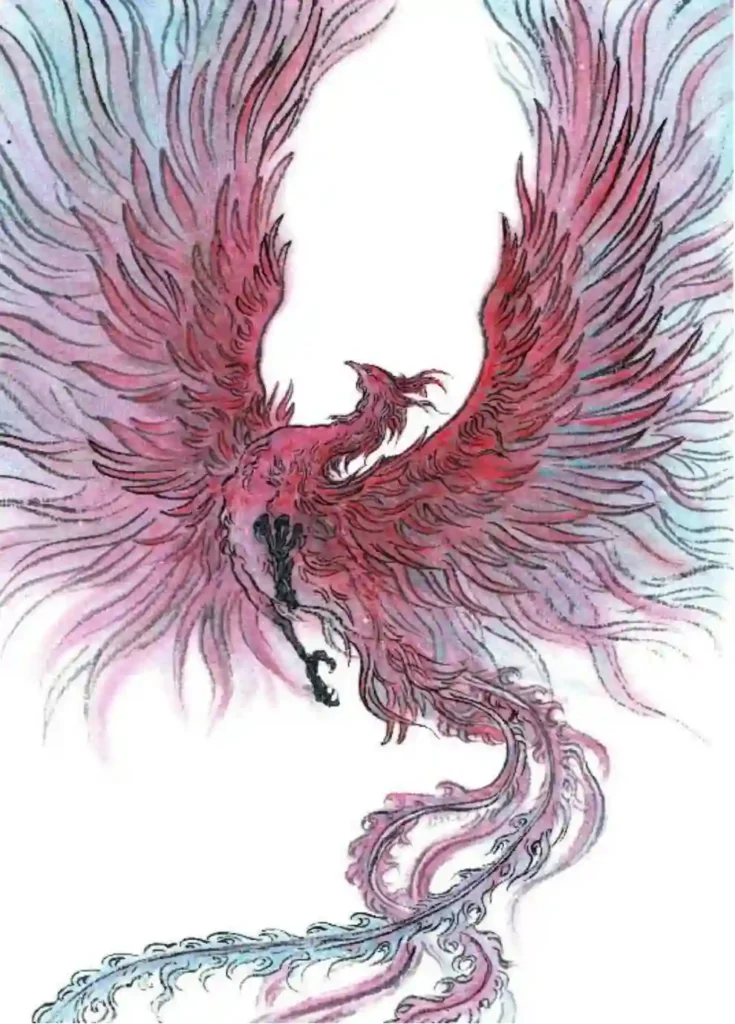
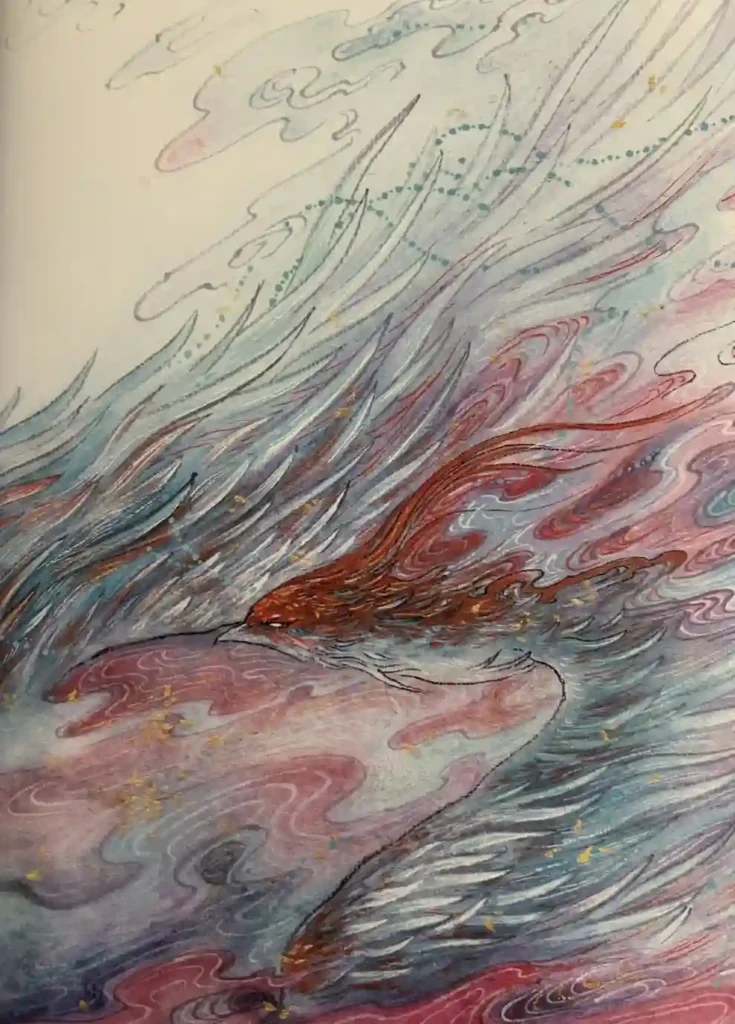
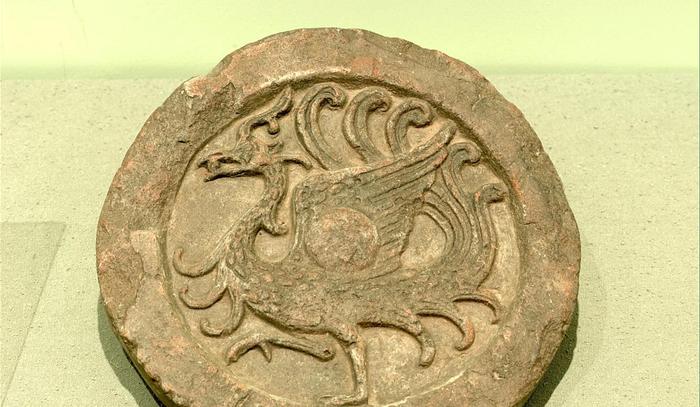

“The divine birds recorded in the Shanhai Jing reveal how early totems evolved into the phoenix.”
— Yuan Ke, Chinese Myth Legends
In Chinese mythology, power, virtue, love, seasons, and judgment were shared among bird deities. This logic of “distributed divinity” explains the depth behind mythical phoenix tattoos today.
From Mythical to Marking – Why Phoenix Tattoos Still Matter
The Chinese phoenix—fenghuang—is not just a bird. It is a vessel for history, identity, and ideals.
A phoenix tattoo symbolize renewal, but also harmony, elegance, and cultural strength. In China, the phoenix did not rise from ashes, it rose from reverence. From empress robes to jade carvings, it lived in ritual, power, and poetry.
That’s why mythical phoenix tattoos are more than beautiful ink—they carry centuries of meaning. Whether you seek balance, rebirth, nobility, or peace, the phoenix has a story to match.
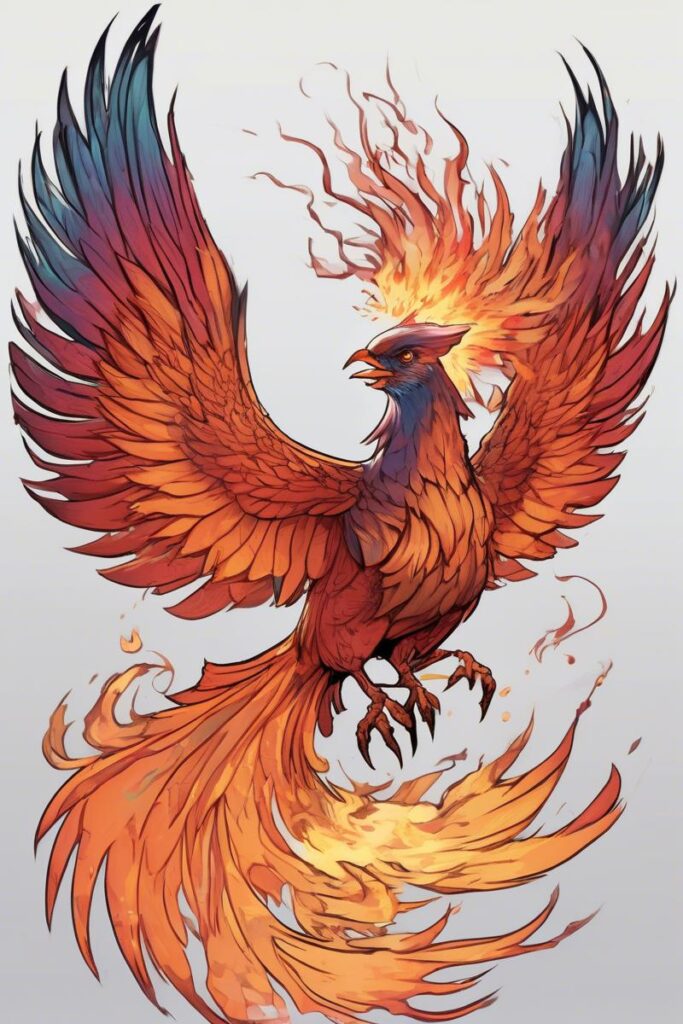
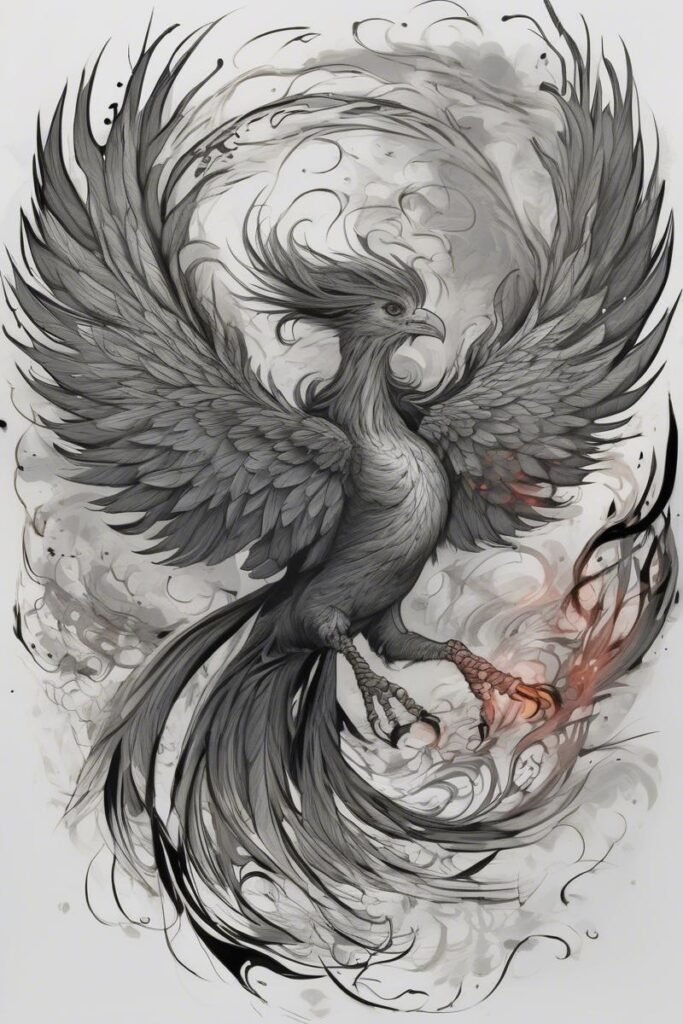
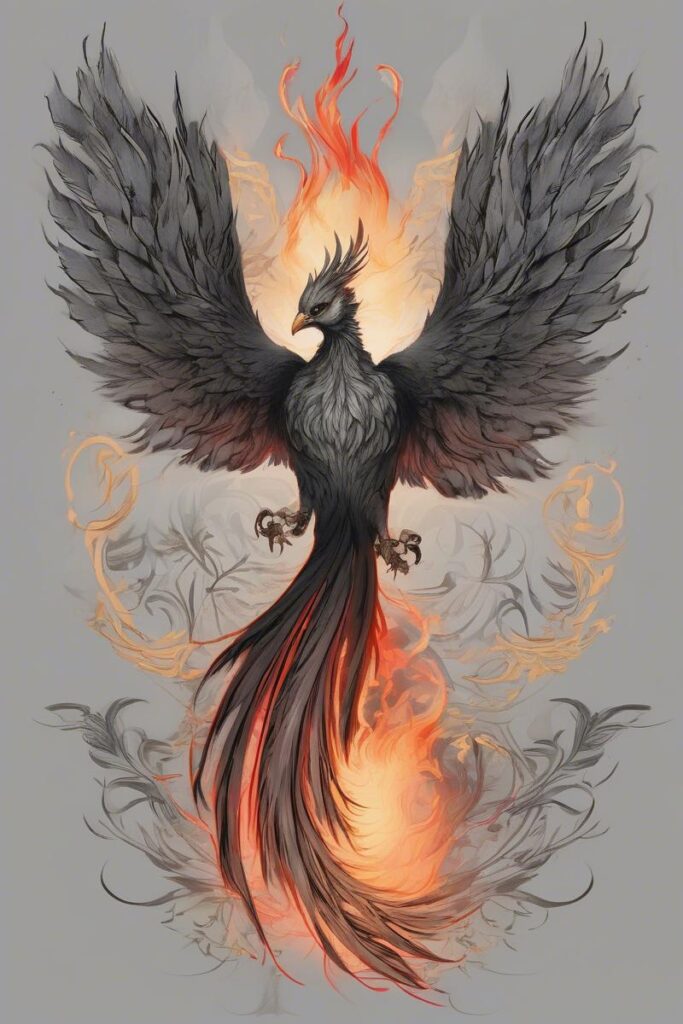
mythical phoenix tattoos aren’t just art—they’re echoes of ancient wings.
Want to explore how the phoenix appears in other world myths—from China to Greece ?
Click here to read our post “What Does a Phoenix Tattoo Mean?“
Primary sources:
Chinese Mythology Studies (中国神话传说) By Yuan Ke
Xi’an Qin Brick and Han Tile Museum
《观山海》by Shan Ze And Liang Chao
Comments
2 responses to “A Mythical Phoenix of Fortune Soaring from China’s Ancient Legends”
-
[…] Read more about the Chinese phoenix in our article: A Mythical Phoenix of Fortune Soaring from China’s Ancient Legends […]
-
[…] In Chinese mythology, the Fenghuang was a symbol of harmony and divine favor, often rich with flowing feathers and jewel-toned wings. (Explore the Fenghuang further in our article on China’s mythical phoenix.) […]
Leave a Reply